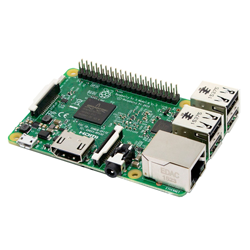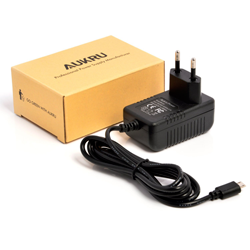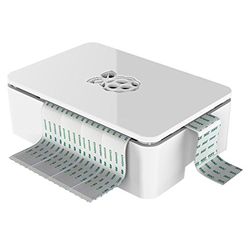
Monitor your Raspberry Pi with eZ Server Monitor
ⓘ Cet article peut avoir été partiellement ou totalement traduit à l'aide d'outils automatiques. Nous nous excusons des erreurs que cela pourrait engendrer.
Your Raspberry Pi slows down or heats up? Would you like to know the temperature and the percentage of CPU utilization or the status of the partitions on your SD card? You need a tool that will allow you to see at a glance the health of your card! For this we will show you how to install eZ Server Monitor, a monitoring tool that allows you to see from a web browser through a clear interface in what state your Raspberry Pi is
Prerequisites for using eZ Server Monitor
In order to install this monitoring solution, you must have your Raspberry Pi connected to the networks (via ethernet or wifi). If you have a Raspberry Pi 2 or older and want to go via wifi, you will need a suitable wifi dongle .
If all this is good, you will need to install a web server on your Raspberry Pi. Apache or Nginx, it does not matter, take the one with which you feel more comfortable. For those who do not know how to do, we advise you to use the same as us to stick perfectly to this tutorial, namely Nginx. You will find how to install it on our dedicated tutorial .
Now that your Raspberry pi is ready, we can move on to the installation and configuration of eZ Server Monitor.
Installing eZ Server Monitor
First of all, go to the folder that stores your website. In our case we are under nginx and our websites are stored in/var/www/html
cd /var/www/html/
Now, download the latest version of eZ Server Monitor as a web version. At the time of writing this tutorial, the latest version is 2.5 but you can find the list of all versions at this address: https://ezservermonitor.com/esm-web/downloads
sudo wget --content-disposition http://www.ezservermonitor.com/esm-web/downloads/version/2.5
Once downloaded, unpack the new folder and delete the archive
unzip ezservermonitor-web_v2.5.zip sudo rm ezservermonitor-web_v2.5.zip
Once the installation is complete, we can proceed to the configuration of your Raspberry Pi monitoring system. But just before this for easy access from a browser, it is possible to rename the folder name in which eZ Server Monitoring is located
mv eZServerMonitor-2.5/ monitoring/
For the actual configuration of the monitoring, you will find it in the folder conf.
nano monitoring/conf/esm.config.json
In this file, we advise you to replace all false with true. When you see the interface, you can easily understand the different parameters and adjust the configuration according to your needs.
To access your monitoring system, you only have to open a browser, and enter the IP of your Raspberry followed by the name of the folder in which your monitoring is located. By following this tutorial and with a Raspberry Pi that has an IP in 192.168.1.40 it would give:
http://192.168.1.40/monitoring/
Here you are now with a Raspberry Pi under control









